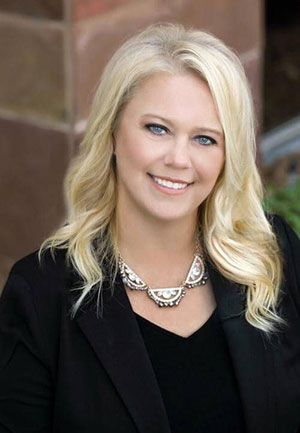A Clayton Election trust is a type of revocable married couple trust that creates some tax flexibility for medium to larger sized estates. It includes the option to create an irrevocable QTIP trust and/or Bypass trust when the first spouse dies. These irrevocable trusts that spring from the trust at the death of the first spouse are marital trusts to support the surviving spouse who can be given the right to withdraw income only or income and principal from the QTIP and Bypass trusts. The surviving spouse can also be the Trustee of the QTIP and Bypass trusts, but the trust can be drafted with a different Trustee in charge of these trusts, which sometimes makes sense in a blended family or where creditor protection for the surviving spouse is desired [Estate of Clayton v. Commissioner, 976 F2d 1486 (5th Cir. 1992)].
This approach allows the Trustee more time to identify which assets are suitable for each trust based on the current economic conditions and ongoing tax reform. The Trustee will then make a QTIP election only for assets selected for the QTIP trust to receive the full step-up in basis at the second death. This Clayton trust option provides a lot more flexibility than a traditional A/B trust without all the limitations on capital gains tax treatment for Bypass trust assets when the surviving spouse later dies. This is due to the option to pick and choose if a QTIP trust or a Bypass trust or both will be funded upon the death of the first spouse. With this strategy, the plan is designed as A/B trust, but allows an independent executor to elect QTIP treatment over all or a portion of the deceased spouse’s trust assets on the deceased spouse’s 706 death tax return. The election may include up to the entire amount of the deceased spouse’s share of the trust estate when they pass or only a portion of it.
Any trust property of the deceased spouse for which the QTIP election is not made then funds to the Bypass trust. Assets in the QTIP trust are includible in the surviving spouse’s estate at death and will receive a step-up in basis at the time the remainder beneficiaries inherit them. If the beneficiaries later sell assets that were inherited through the QTIP trust, the capital gains tax liability is typically lower due to the step-up in basis that the QTIP assets receive. Though Bypass trust assets do not receive a step-up in basis upon the death of the surviving spouse, the Bypass trust has the advantage of utilizing the estate tax exemption of the deceased spouse.
The Bypass trust and the QTIP trust can be drafted to be substantially the same with regard to access by a surviving spouse and who the remainder beneficiaries are. This way the spouse who dies first can ensure that the remainder beneficiaries of these trusts are not later changed (subject to any testamentary limited power of appointment given to the surviving spouse).
If there is a long-standing marriage with joint children, the couple may want to give the surviving spouse a testamentary limited power of appointment to reallocate or recast the way the assets of the QTIP or Bypass trusts flow to or among their descendants, charities, and/or spouses of their descendants. Another tool for flexibility in a long-standing marriage may be to include a provision that states that in the event the total estate is lower in value that the deceased spouse’s estate tax exemption and all of the remainder beneficiaries of the trust agree, the surviving spouse can forgo establishing a QTIP and/or Bypass trust. This is helpful in situations where the exemption has risen and/or the estate value has dropped. This creates the option for simplicity with only using a Survivor’s Trust down the road in the right circumstances.
However, in a blended family, a couple may not want to include a testamentary limited power of appointment or opt out provision as described above because the surviving spouse could reallocate the Bypass or QTIP trust assets, disinheriting the deceased spouse’s children.
Another advantage of the Clayton approach is that the election is made by an independent executor to avoid potential gift tax exposure by the surviving spouse. It also provides more objectivity especially in a blended family.
Because the Clayton election is made on a timely filed 706 death tax return, the decision to vest assets to the QTIP trust must be made within 9 months of the death of the first spouse to die (a 6-month extension may be obtained, extending the time to make the election up to 15 months).
Besides flexibility, the Clayton election can provide the advantage of asset protection for the deceased spouse’s share of the trust assets, continuity of the remainder beneficiaries and an additional cost basis adjustment for assets in the QTIP trust after the surviving spouse later dies. Also, because the Clayton election is made on the 706 death tax return, this provides the additional opportunity to elect portability of any unused portion of the deceased spouse’s Estate Tax exemption.
The surviving spouse’s trust property that has been vested to a Survivor’s trust (aka “A” trust) and the property in the QTIP trust are included in the survivor’s estate. Those assets receive a second step-up in basis when the surviving spouse later dies. But the survivor may also leverage the deceased spouse’s Bypass trust and/or ported estate tax exemption in case it’s later needed.
Flexibility is the key to the Clayton election’s power. For medium-sized estates, we won’t know the best course of action until the death of the first spouse to die. We may want to place some assets into a QTIP trust so we secure a step-up in basis and avoid capital gains tax upon the death of the surviving spouse. And in other cases, vesting assets to a Bypass trust may be more important to save on estate taxes.
It is important to note that relying on portability alone without tax planning in the joint trust to preserve a first spouse’s Estate Tax exemption has some flaws. The DSUEA (port of the deceased spouse’s exemption on the 706) does not adjust for inflation (growth in the assets) and it may be lost upon remarriage of the surviving spouse. Therefore, using a Bypass trust may make more sense to preserve the use of the DSUEA of the deceased spouse instead of only using a portability election on the 706 death tax return.
Protection for children from a prior marriage is arguably superior with a Bypass trust as well since we would not be at risk of an independent executor failing to make the QTIP election. Allocation of the deceased spouse’s GST exemption to a Bypass can be more easily accomplished as well.
These are all factors and considerations that must be taken into account when planning for a married couple with a medium to larger sized estate. If you or a friend or family member need counsel on how to best plan to minimize estate taxes and capital gains in a married couple joint trust, contact our offices at (760) 448-2220.
